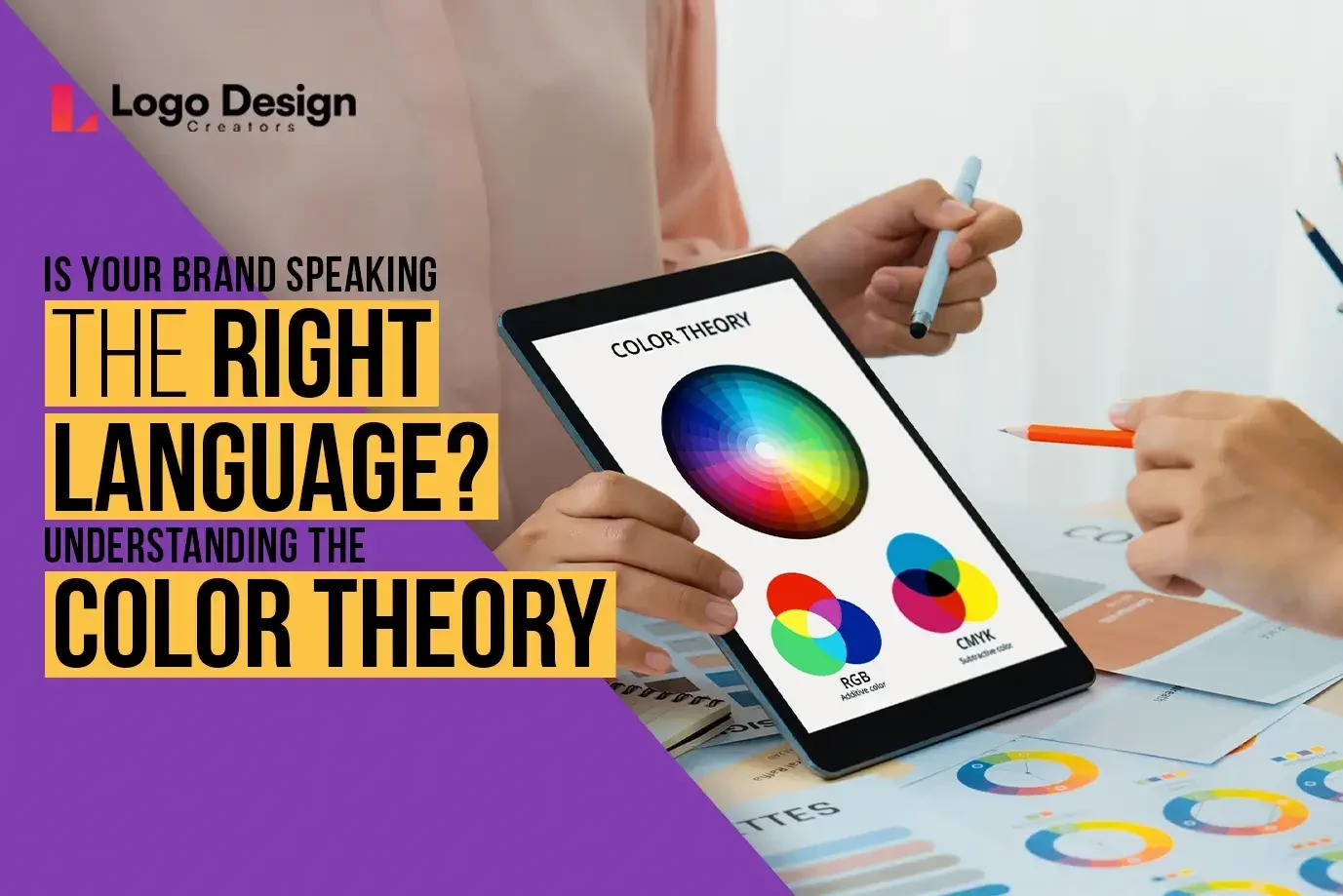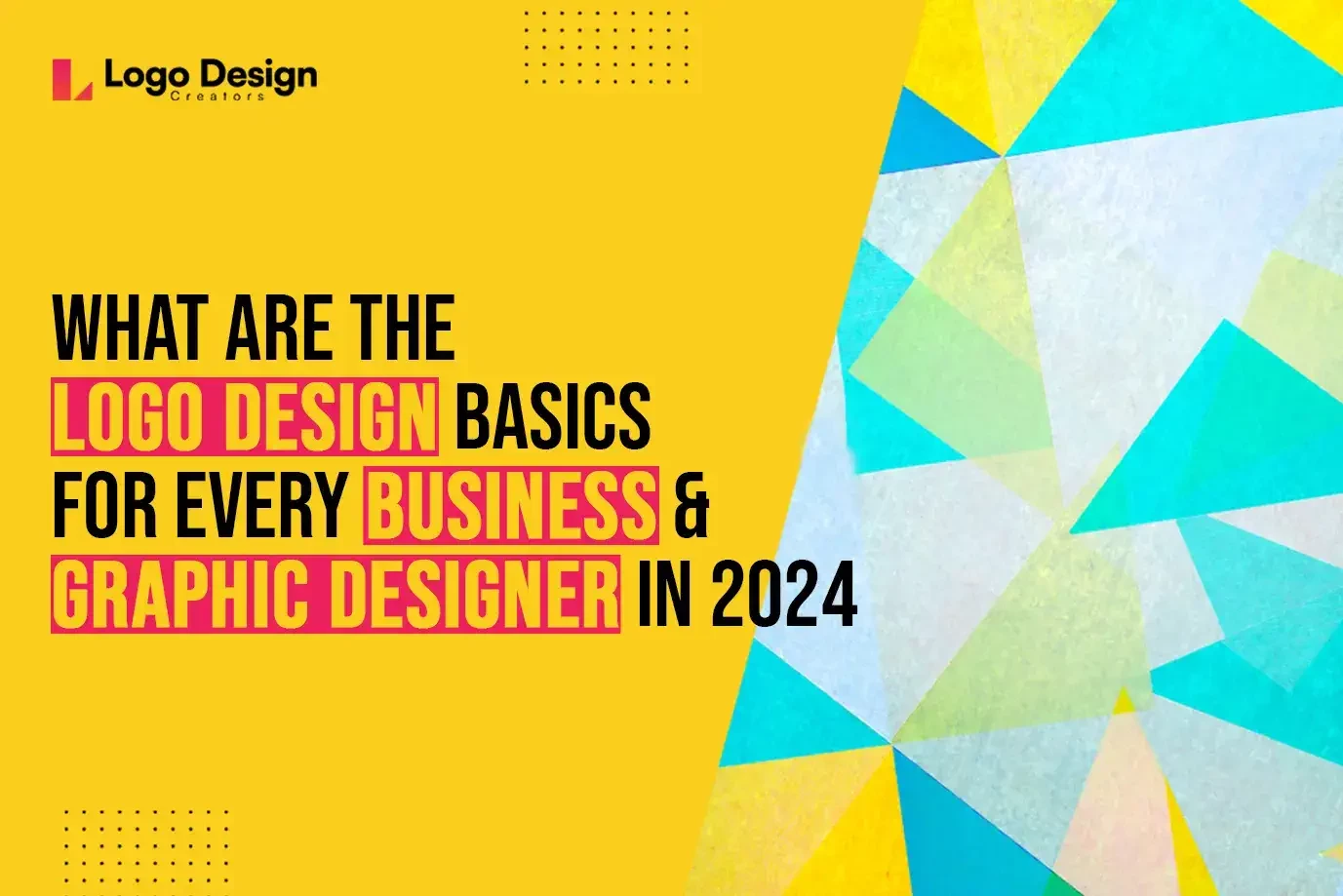
Is Your Brand Speaking the Right Language? Understanding the Color Theory
Have you ever considered why some color combinations calm and others energize? Why does a red button on a website catch your eye while a blue one feels more trustworthy? The intriguing world of color theory, a core design idea, reveals why color theory is important and how color may influence emotions, perceptions, and user behavior.
A History Painted in Color
Color theory has influenced design for millennia. From ancient Egyptians linking colors with deities to Sir Isaac Newton's 17th-century study on light and color, our understanding of color has changed. Artists like Johann Wolfgang von Goethe studied color's psychological effects in the 18th century, laying the path for scientific color theory in design. Color guides user experience and builds strategic brand identities for designers today.
Effective visual communication requires knowledge of color psychology, which studies how colors affect emotions and behavior. From warm red to calm blue, colors may provoke different emotions. Designers can use this power to impact how customers view a brand, traverse a website, or use a product.
Also Read: Brand Designer vs Graphic Designer: Who to Opt For?
A Breakdown of Color Fundamentals
Let's start with color theory before discussing color schemes and applications. Here, we'll explore color fundamentals, the building blocks that form the vast spectrum of colors we utilize in design:
The Mighty Trio: Primary Colors
Primary colors underpin all colors. They cannot be blended, making them unique in color theory. Three primary colors are:
i) Red:
Energy, passion, and excitement are connected with this vibrant color.
ii) Yellow:
Yellow gives sunlight and cheer to a design by evoking happiness, optimism, and warmth.
iii) Blue:
Blue evokes trust, calm, and security.
Just imagine life without these essential colors. A bland thing! Adding varied amounts of these primary colors creates distinct design hues.
The Secondary Blend: Creating New Colors
Beautiful secondary colors are the result of the primary colors. To make them, mix equal portions of two primary colors:
i) Orange:
Combining red and yellow creates this lively color. It inspires creativity, warmth, and excitement.
ii) Green:
Blue and yellow combine to become green, symbolizing nature, growth, and harmony. It balances and calms.
iii) Violet:
Violet—a blend of red and blue—is associated with elegance, inventiveness, and mystery.
Designers may widen their palette and creativity by knowing how primary colors interact.
Expanding the Spectrum: Tertiary Colors
The color story goes beyond primary and secondary hues. It mixed primary and secondary colors on the color wheel to form tertiary hues. This broadens designers' color palettes.
Some examples:
i) Red-Orange:
Red's intensity and orange's vibrancy make it a warm, energetic color.
ii) Yellow-Green:
Balance and freshness are achieved by combining yellow's liveliness with green's tranquility.
iii) Blue-Violet:
Combining blue's peacefulness and violet's mystery creates a sophisticated, soothing color.
Tertiary colors expand the color spectrum, allowing designers to create moods and styles.
Also Read: Why Should You Hire a Professional Logo Designer For Business Growth?
The Color Wheel
The color wheel shows color connections and guides designers. It displays primary, secondary, and tertiary colors in a circle to highlight their relationships and harmonies.
The color wheel is a valuable tool for understanding:
i) Color Harmony:
Colors close to each other on the wheel are similar and create harmony.
ii) Color Contrast:
Complementary colors opposite one other on the wheel generate significant contrast, drawing attention and emphasizing elements.
iii) Color Temperature:
Warm and cool colors affect the design mood.
iv) Warm Colors:
Warm colors include red, orange, and yellow. Their association with fire, sunshine, and energy evokes warmth, passion, and excitement.
v) Cool Colors:
Cool colors include blue, green, and purple. They symbolize calm, peace, and tranquility due to their association with water, nature, and sky.
Mastering the Color Palette: Hue, Saturation, and Brightness
Understanding how to manipulate hue, saturation, and brightness is fundamental to creating effective color palettes in design. Let's explore each of these elements in detail:
Hue: The Essence of Color
Imagine a sky-spanning rainbow. That spectrum has various hues for each band. Hue is primary colors like red, blue, green, yellow, etc. It's the main difference between colors.
Key Points about Hue:
i) Many hues exist, but basic color theory concentrates on mixed primaries of red, yellow, blue, orange, green, and purple.
ii) The human eye can distinguish colors, allowing for highly detailed color palettes.
Saturation: Conveying Color Intensity
Color saturation is its intensity or purity. Saturated colors are intense like freshly painted fire engine red or lemon yellow. Color becomes muted when saturation decreases. Add white to red paint to make it fade to a dusty rose or pale pink.
Key Points about Saturation:
* Highly saturated hues are eye-catching.
* Less saturated colors might relax and exude sophistication or age.
* Changing saturation gives you more color options for your design by creating variations within a hue.
Brightness: Balancing Light and Dark
Color brightness is its lightness or blackness. Bright colors like sky blue or sunny yellow are airy. Navy blue and cocoa brown are rich, dark colors. A hue can be darkened or brightened by adding black or white.
Key Points about Brightness:
* Bright colors evoke vitality, openness, and joy.
* Dark colors can convey elegance, mystery, and sophistication.
* Adjusting brightness within a hue range gives your design depth and dimension.
The Power of Combining Elements: Achieving Harmony and Contrast
Designers can employ hue, saturation, and brightness to create beautiful color combinations that inspire emotions and direct user experience. Building a color palette involves two main ideas:
i) Color harmony:
* It refers to colors that look good together. Different color schemes, which we'll cover later, can help establish harmony.
ii) Color contrast:
* The visible disparity between colors. Low contrast is modest and unassuming, while high contrast is striking and attention grabbing.
Effective design requires balancing harmony and contrast.
Color Symbolism and Cultural Influences: Beyond Aesthetics
Color has power beyond beauty. Colors can symbolize and evoke emotions based on culture and situation.
i) Color symbolism:
* Red may represent love and passion in Western civilizations but danger or fury in Eastern traditions. Designers in a globalized environment must understand these symbols.
ii) Cultural influences:
* Local customs and religion might affect color perception. White may indicate purity in Western marriages but grief in Asian cultures.
The Language of Emotions: How Colors Speak to Us
Colors significantly affect our moods and perceptions. They can affect our moods, behaviors, and information interpretation. Designers can leverage these psychological links to create images that inspire emotions and guide user experience. Explore the emotional language of some standard colors:
1. Red
Red is striking and attention-grabbing. Often related to:
i) Passion and Excitement:
* Red inspires love, desire, and passion.
ii) Energy and Action:
* It symbolizes motion and urgency.
iii) Danger and Warning:
* Red is the international stop indication for danger or caution.
2. Orange
Warm and optimistic orange is lively and dynamic. Often associated with:
i) Enthusiasm and Playfulness:
* Orange symbolizes youth, energy, and enjoyment.
ii) Stimulation and Creativity:
* It can boost creativity and socialization.
iii) Warmth and Comfort:
* Orange conveys friendliness and approachability.
3. Yellow
Yellow is cheery and intellectually stimulating. Often related to:
i) Happiness and Optimism:
* Yellow symbolizes happiness and optimism.
ii) Intellect and Mental Clarity:
* Understanding, learning, and mental stimulation are possible.
iii) Attention and Visibility:
* Yellow stands out and draws attention to vital information.
4. Green
Green is soothing and reminds us of nature. Often associated with:
i) Nature and Growth:
* Green symbolizes nature, rebirth, and vegetation.
ii) Harmony and Balance:
* It promotes calm and equilibrium.
iii) Money and Prosperity:
* Some cultures connect green with riches and success.
5. Blue
Calm and peaceful blue fosters trust and harmony. Often associated with:
i) Trust and Reliability:
* Blue represents security, dependability, and stability.
ii) Calmness and Peace:
* It calms and relaxes.
iii) Logic and Intelligence:
* Blue symbolizes reason and knowledge.
6. Purple
Royal and wealthy purple evokes mystery and inventiveness. Commonly connected with:
i) Luxury and Sophistication:
* Purple symbolizes class and value.
ii) Creativity and Imagination:
* Inspiration, inventiveness, and mystery are associated with it.
iii) Royalty and Power:
* Purple symbolizes royalty and power throughout history.
7. Black
Classic black exudes power and authority. Often related to:
i) Power and Elegance:
* Black represents formal, sophisticated, and robust.
ii) Luxury and Exclusivity:
* It can represent luxury and mystery.
iii) Modernity and Minimalism:
* Modern design uses black for a clean, minimalist look.
Putting Color Theory into Action: Exploring Color Schemes
Designers can employ color psychology and basics to develop mood-setting color schemes that govern user experience. Here are some popular color schemes and their uses:
i) Complementary Colors:
* These are opposite on the color wheel, generating contrast and vibrancy. Imagine red, green, or blue and yellow. This design is excellent for drawing attention yet overwhelming if overused.
ii) Analogous Colors:
* Analogous colors look good together on the color wheel. Combining blue, blue-green, and green is soothing and natural. This scheme helps designs flow and feel cohesive.
iii) Triadic Colors:
* Three colors evenly spaced on the color wheel constitute a triadic scheme. The composition is visually appealing and balanced. Consider red, yellow, and blue. Triadic patterns are attractive but must be handled carefully to avoid clutter.
iv) Monochromatic Colors:
* This scheme uses shades, tints (white), and tones (black or gray) of a single hue. A minimalist design uses this to achieve a polished and coherent look.
v) Split-Complementary Colors:
* This scheme employs a base color and the two colors alongside their complementary color on the wheel. For instance, blue-green and yellow-orange with red as the base. This is more balanced than a complete, complimentary design and still attractive.
The mood, audience, and design intent determine the color scheme. Using varied combinations and considering color psychology is critical to developing striking designs.
The Power of Color in Logo Design
A logo is often the first point of contact between a brand and its audience. Colors are crucial in shaping brand identity and establishing a lasting impression.
i) Understanding Logo Types
* Types of logos can be categorized as wordmarks (text-based), lettermarks (using initials), or brand marks (symbolic). The color choices will vary depending on the logotype. For example, a wordmark logo like "Coca-Cola" relies heavily on color to establish brand recognition.
ii) Color Speaks Volumes
* By understanding color psychology and choosing colors strategically, designers can create logos that resonate with the target audience and leave a lasting impression.
* A brand's logo is its visual foundation. It typically makes a first impression on a potential customer and shapes business identity. Colors reflect brand ideals, personality, and audience emotions.
iv) Understanding Logo Types and Color Choices
* Logos come in various forms, each with its approach to color:
a) Wordmarks:
These logos rely heavily on color for brand recognition, as the text forms the logo.
Example:
* Coca-Cola's iconic red script is instantly recognizable and synonymous with the brand's refreshing taste.
b) Letter marks:
These logos use initials or abbreviated brand name versions. Color choices can convey a sense of professionalism, modernity, or playfulness, depending on the brand.
Example:
* NASA's "worm" logo utilizes a bold red, white, and blue color scheme, reflecting the organization's association with the American flag and space exploration.
c) Brand Marks:
These symbolic logos don't rely on text. Color is vital in imbuing the symbol with meaning and establishing brand personality.
Example:
* Apple's bitten apple logo is instantly recognizable, and the simple, clean silhouette allows the bright, solid color (often black or a variation of silver) to take center stage, reflecting a modern and innovative brand image.
Case Studies in Color
Let's delve into some successful logos and explore how the color theory for logo design is strategically applied:
i) McDonald's:
* The golden yellow arches demonstrate how color can generate emotion. The bright yellow conveys happiness, warmth, and familiarity, ideally capturing McDonald's brand message of inviting and fun family dining.
ii) Facebook:
* The blue color scheme is another excellent color psychology illustration. Blue symbolizes trust, security, and connection, representing Facebook's mission to connect people through social media.
iii) Amazon:
* The Amazon logo's orange arrow has a dual purpose. The orange symbolizes excitement, energy, and optimism, which matches their vast collection and easy shopping platform. The arrow points to the right, implying progress and accomplishment and indicating that their website is easy to use.
Color Theory in Action: A Spectrum of Applications
Color theory transcends logos and acts as a foundational element across the vast landscape of graphic design. Let's explore how color strategically influences various color theory graphic design aspects:
1. Guiding the Eye: Visual Hierarchy with Color
Visual hierarchy organizes design elements to direct the viewer's eye and prioritize information. Color helps do this:
i) Contrast is Key
Designers can highlight headlines, call-to-action buttons, and items using contrasting colors.
Example:
* A new fitness program website may employ a vivid orange call-to-action button on a great blue background. Contrasting hues give attention to the button, boosting signup.
ii) Color Harmony for Balance:
Contrast highlights vital components, while color harmony creates an attractive and balanced design.
Example:
* A brochure featuring multiple travel destinations can use a natural greens and blues color palette to symbolize lush landscapes and tranquil coastlines.
2. Communicating Clearly: Color as a Visual Language
Color can communicate powerfully without words:
i) Universal Color Codes
Specific colors have universal symbols. For instance, red means stop, green means go, and yellow warns.
Example:
* Drivers worldwide receive unambiguous instructions from red, yellow, and green traffic lights.
ii) Emotional Associations
Colors can affect mood and user experience. Understanding these relationships improves designers' communication.
Example:
* To quiet visitors, a relaxation product website may use soothing blues and lavenders.
3. Influencing Behavior: The Power of Color in Marketing
In graphic design advertising and marketing, color can sway customers:
i) Understanding Target Preferences
Color preferences vary by population and culture. Understanding these tendencies helps marketers choose colors that appeal to their audience.
Example:
* A children's toy brand may utilize bright colors like yellows, pinks, and blues to attract kids and parents.
ii) Psychological Impact
Color psychology is essential in marketing. Colors can evoke enthusiasm, trust, or urgency, affecting purchases.
Example:
* A premium jewelry firm may sell its wares in rich purples and blacks to represent elegance, refinement, and value.
Logo color theory helps marketers build stand-out campaigns, communicate brand messages, and change customer behavior.
Flat Design: Minimalism with Color
Flat design logo color is popular because of its simplicity and clean lines. Color dominates this basic approach, making it essential for visual eng?agement.
Why Flat Design Relies on Color
Gradients, shadows, and textures are avoided in flat design. This purposeful lack of detail requires judicious color use:
i) Compensate for Simplicity
Color draws attention and adds visual appeal to designs with fewer visual elements.
Example:
* Flat-design music festival posters may use bright, contrasting colors. Consider a bold blue background with orange and yellow geometric elements for a striking composition.
ii) Enhance User Experience
Color may draw attention to critical elements and establish an information hierarchy.
Example:
* Flat-design mobile apps may have color buttons and clickable icons. Color consistency simplifies app navigation, making it user-friendly.
The Power of Bold and Vibrant Colors
Big, rich colors are used in flat design for maximum impact. This method follows flat design principles:
i) Creating Vibrancy
Saturated hues give simple designs life and vigor.
Example:
* A sportswear brand's flat design website may include a bold red background, white lettering, and product photos. The bold color combination conveys power and activity, complementing the brand's sporty image.
ii) Evoking Emotions
Bold colors can invoke emotions and set the design mood. Understanding color psychology helps designers match colors to brand messages.
Example:
* Flat-design infographics encouraging healthy eating may use bright greens and yellows. These hues represent nature, freshness, and wellness, matching the infographic's content.
Case Studies in Color
Famous logos and app icons exemplify how flat design uses color to create a modern and distinctive corporate identity:
i) Spotify:
* The brand's green color palette is readily recognizable. Its vibrant green color reflects the platform's focus on music discovery and active listening.
ii) Airbnb:
* The red logo symbolizes hospitality and home with its warm tone. It fits Airbnb's objective of providing unique travel experiences.
Regional Influences: Color and Logo Design
While graphic design color theory offers universal principles, its application can be influenced by regional design trends and cultural preferences. Let's delve into how location can impact color choices in logo design:
i) Examining Cityscapes:
* Chicago:
Often nicknamed the "Windy City," Chicago logo design favors bold and cool colors like blues and grays, reflecting the city's industrial heritage and lakefront location.
* Dallas:
This Texan metropolis exudes a vibrant energy. Dallas logo design is often reflected in logos using warm, inviting colors like red, orange, and yellow.
* Houston:
As the center of the oil and gas industry, Houston logo design might incorporate black or dark blue to convey a sense of professionalism and stability, alongside accents of brighter colors representing the city's dynamism.
ii) Cultural Nuances:
* Color symbolism varies significantly across cultures. Understanding these variations is crucial for international brands. For instance, white might symbolize purity in Western cultures but mourning in some Eastern cultures.
iii) Location:
* The surrounding environment can also influence color choices. Coastal regions might favor cool blues and greens, while desert landscapes might inspire the use of warm browns and yellows.
By considering regional preferences and cultural contexts, designers can create logos that resonate with local audiences and strengthen brand recognition.
Wrapping Up
We've covered color theory's exciting history and design applications. Important takeaways:
* Color theory helps designers create emotional, user-focused graphics.
* Designers may make better selections by understanding color psychology, hue, saturation, brightness, and color schemes.
* Logo color shapes brand identity and perception.
* Color theory affects visual hierarchy, communication, and marketing beyond logos.
* Consider the target audience's location and background when choosing logo colors due to regional trends and cultural variations.
The language of the color theory logo allows designers to tell tales, inspire emotions, and develop impactful design solutions. Explore color theory, try new color combinations, and use color to realize your design vision.


 +1(929) 203-4191
+1(929) 203-4191 info@logodesigncreators.com
info@logodesigncreators.com


